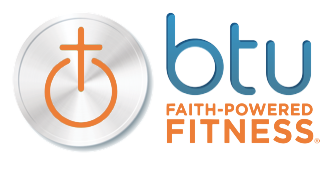How do you go about eating an elephant? You wouldn’t, that’d be mean. Elephants are smart, rare, and cute in their giant-nose-kind-of-way. Besides, what’d an elephant ever do to you? Furthermore, you don’t want to get on an elephant’s bad side… they remember everything.
Now eating a cow, chicken, or say, protein bar, that’s a different story. As the saying goes, you’d eat them one bite at a time. You wouldn’t shove the whole thing in your mouth at once. You’d divide it up into manageable pieces.
The same goes for setting goals to get fit. Rather than trying to do too much too fast, I think most people would be better served by identifying specific tangible goals and quantifying them, prioritizing them, then do some good old-fashioned tracking. So how do we do all this?
If you came to me and asked, here’s how the conversation would likely go down:
First question, what are your goals?
I want to get fit.
That’s great, but what do you mean exactly?
I want to lose weight, get toned, be healthier, eat better…
Whoa! Slow down. Those are all good but let’s take one at a time. How much weight?
20 pounds.
20 pounds of what?
Huh?
20 pounds of what? Not all weight is created equally. Most people who say they want to lose “weight” mean that they want to lose “fat.”
Yes, of course, I want to lose 20 pounds of fat.
You mean shed.
Shed?
Yes, shed, not lose.
What’s the difference?
We lose things we want back. We shed things we don’t want to ever see again.
Then I want to shed 20 pounds of fat.
Okay, now we’re getting somewhere. And since I now have you on record saying you want to shed “fat,” then there shall be no freaking out when the scale goes up if the body fat percentage goes down, right?
Uhm, well…
Repeat after me… I will not freak out. Fat matters, weight does not.
(mumbled) I will not freak out. Fat matters, weight does not.
Louder.
I will not freak out. Fat matters, weight does not.
Very good. Now why?
Why what?
Why do you want to shed 20 pounds of fat?
Well, who wouldn’t like to lose weight?
You mean fat?
Yes, I mean fat.. shed fat.
Not good enough. Why else?
I want to fit in my pre-maternity clothes.
Okay, great. Progress! We have gone from some nebulous ideas about merely getting fit, to a very specific goal: shed 20 pounds of fat in order to fit in your pre-maternity clothes. We’ve gone granular in our focus.
This is how we break goals down and make them bite-sizable. Now, we would want to repeat this process with each of your goals. If we did, the result might look like this:
Get toned = put on five pounds of muscle to look smoking hot in a swimsuit for my husband
Be healthier = lower my blood pressure to 120/80 and my cholesterol to 125 so I can live a long and productive life as a better steward of my body
Eat better = get rid of processed foods and high-calorie drinks, buy local, organic meats, and have only one treat a week so as to set a good example for my kids.
Each time we’ve taken vague notions of improvement, narrowed and narrowed and narrowed in order to arrive at a focused, tangible, quantifiable goal.
Not only that, but we’ve identified the “Why” which is equally, if not more important than the “What.” How come this is? Because if we don’t know why we are doing what we are doing, it’s too easy to become distracted and/or discouraged. But by identifying the why, we can get at the heart of the issue, which often times reveals an emotional and/or spiritual need and also an entity outside ourselves.
In your first goal, some self-esteem (emotional) was at stake. In the second goal, some more self-esteem (emotional) but you also want to look your best for your husband (other entity). Your third goal implies the obligation to show respect for your Creator by taking good care of His creation (spiritual/other entity). And the last goal, you want to be a role-model for your kids (other entity). And I find that when your goals lead to something outside yourself, you’re more likely to achieve them. So DO NOT ignore the “Why.”
In setting goals to get fit, we now know how to get to the “What” and the “Why.” In Setting Fitness Goals – Part II, we will look at the how we get to the “How.” How do we set the goal? It’s one thing to say you want to do X because of Y, but how do you set up a system to reach X?
I would tell you more but as you will recall with that elephant-memory of yours, one bite at a time.
